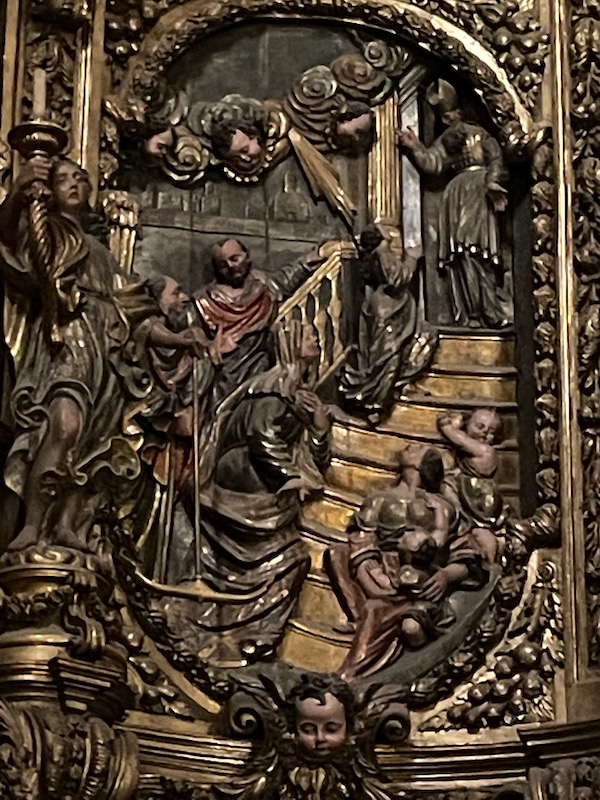Our Blog - Weekend trip in Spain with the Monasterio de Sant Pere de Rodes
You may be thinking that we are never home, and at times throughout the year, I have the same feeling! But we actually do spend a lot of time at home! However, this weekend was not one of those times as a small group of friends headed across the border to Spain for the weekend. And yes, I have to pinch myself every time I realize that I actually CAN drive across the border and spend the weekend in Spain. The border is less than 2 hours if you go directly south towards the Pyrenees, or about 2 1/2 hours along the Mediterranean coast.
We had a nice, relaxing time in a Spanish villa that is 350 years old. The owners bought it as a complete ruin 20 years ago and remodeled it. There is a fireplace upstairs that used to be a bread oven, the two rooms downstairs used to be a stable, and outside there is a circular stone made structure that used to press grapes to make wine. We grilled out one evening and headed to one of the port towns for dinner the other night.
On Saturday, we went exploring a little bit, heading to a nearby monastery up on the Verdera mountain. From there, as Lucy found out, there is a great view down to the Mediterranean.
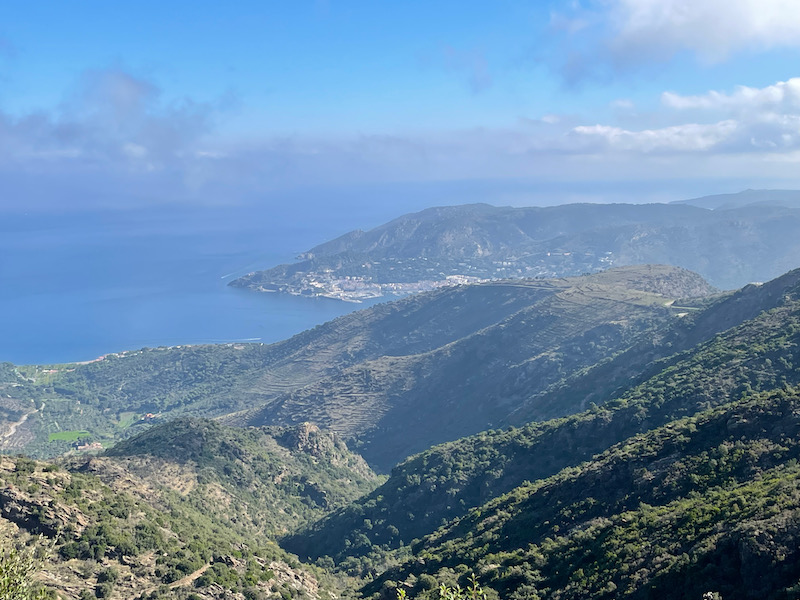

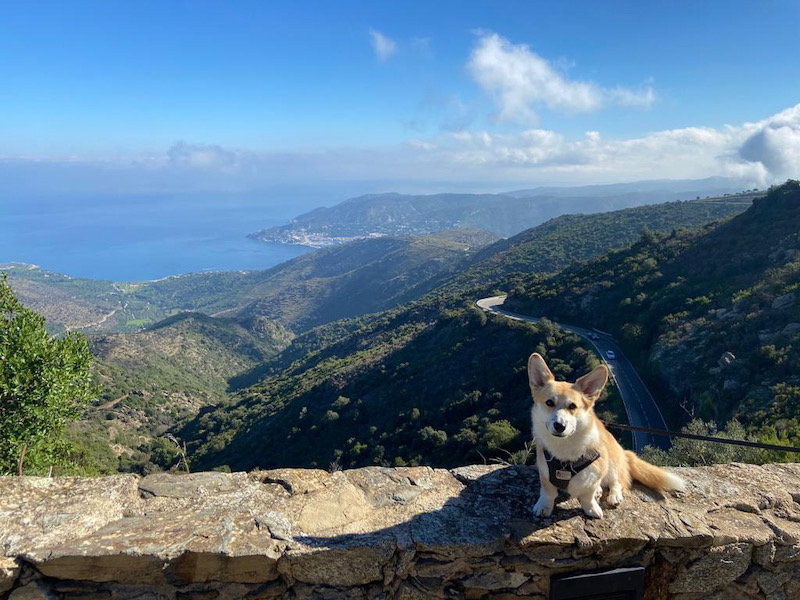
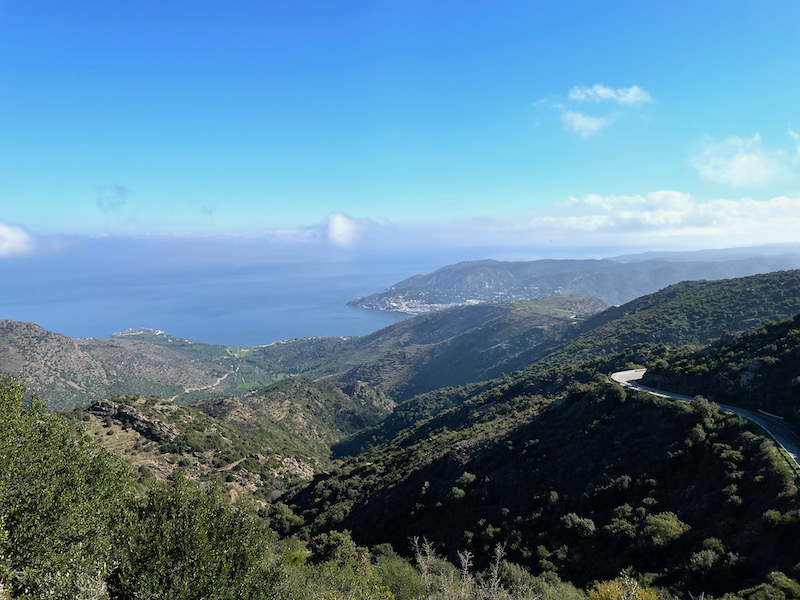
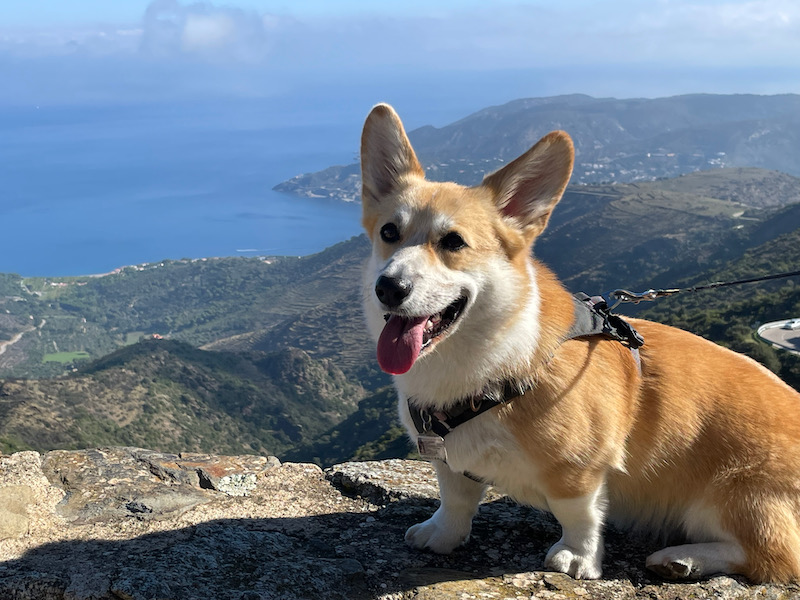
Before we got to the Monastery, we saw this little church called the Ermita de Santa Helena de Rodes. The foundation goes back to the 9th century and was used as a parish church until the 16th century.


The Monasterio de Sant Pere de Rodes was built in the 10th century by the Benedictines and it became the most important in the area. It is quite a large complex, with quite a few buildings, and you can see how it is literally built on a cliff. Like with many monasteries, the Benedictine community abandoned the abbey in 1798 and the complex was looted and fell into ruin.
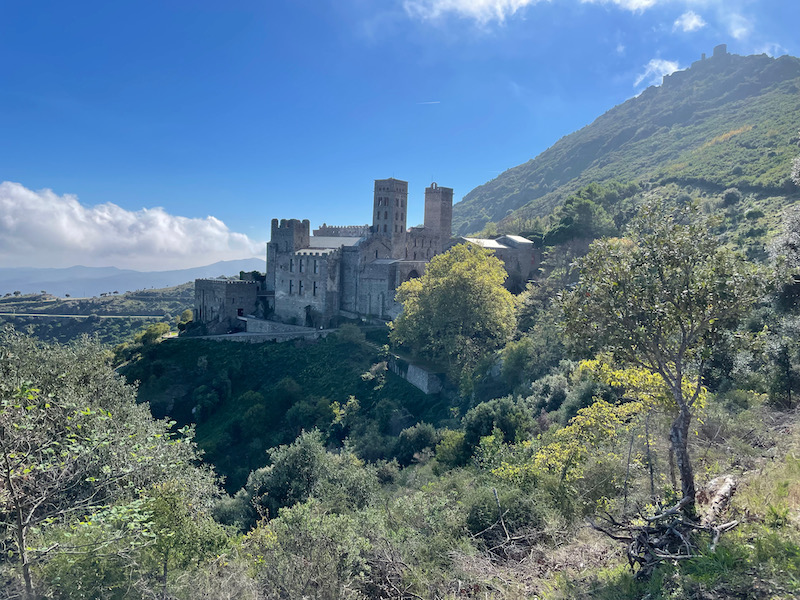

There are two towers visible, and you can tell the difference in architecture between the two. The first, in the foreground of the first picture, is very much a "fortress" tower, while the second one is much more ornate. The defensive tower was probably started in the 10th century, which the square bell tower is from the 12th century and shows a Lombard influence from the previous century.
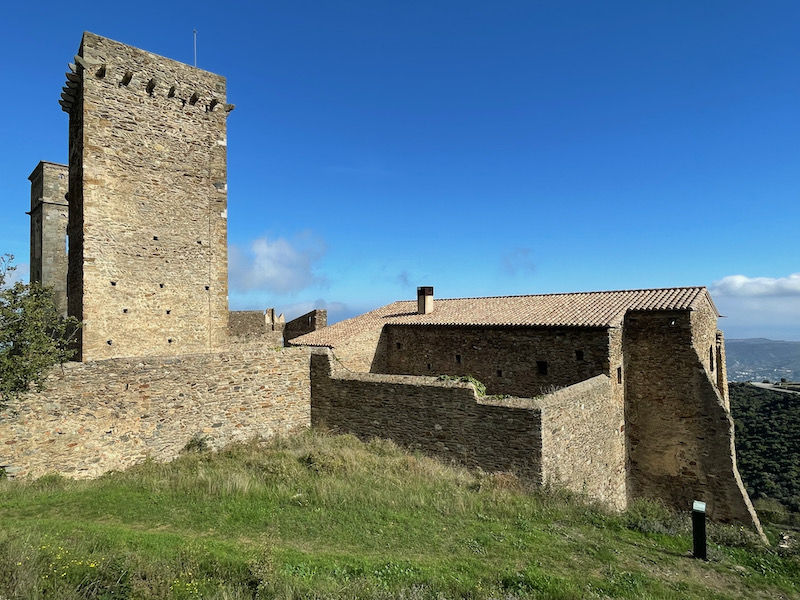
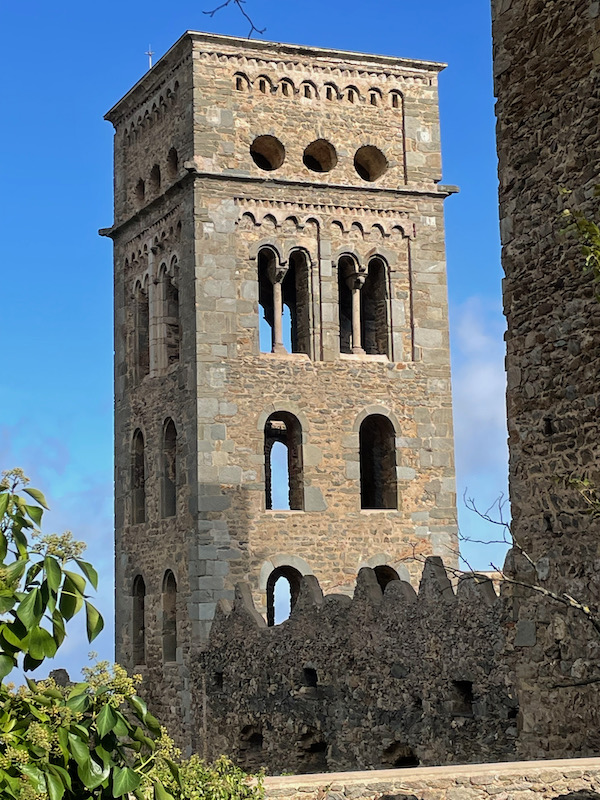
Here we have gone into the courtyard with the Renaissance bell tower in front of us. The arch at the lower-left is the entry into the church (you can see the roof of the church attached to the left side of the bell tower). Then between the bell tower and the fortification tower is the cloister (at the base level) and the open windows are from what would have been the monks residential quarters.
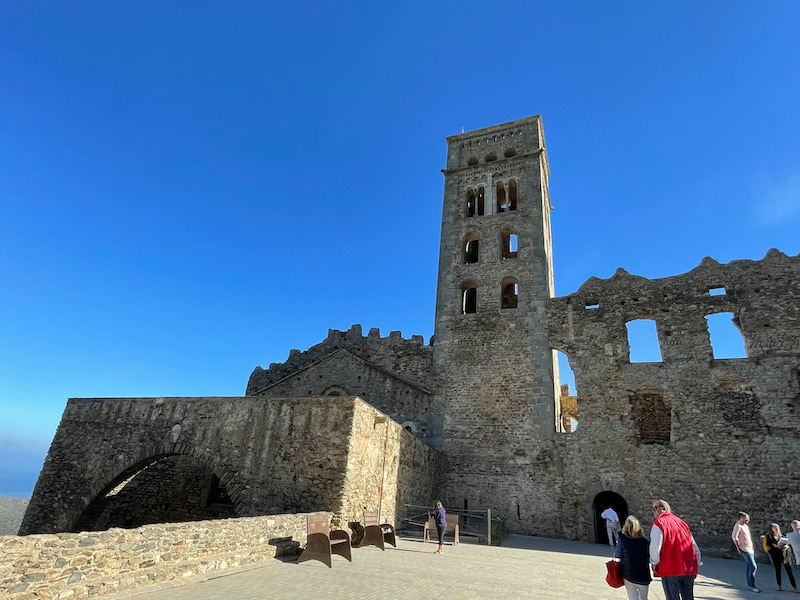
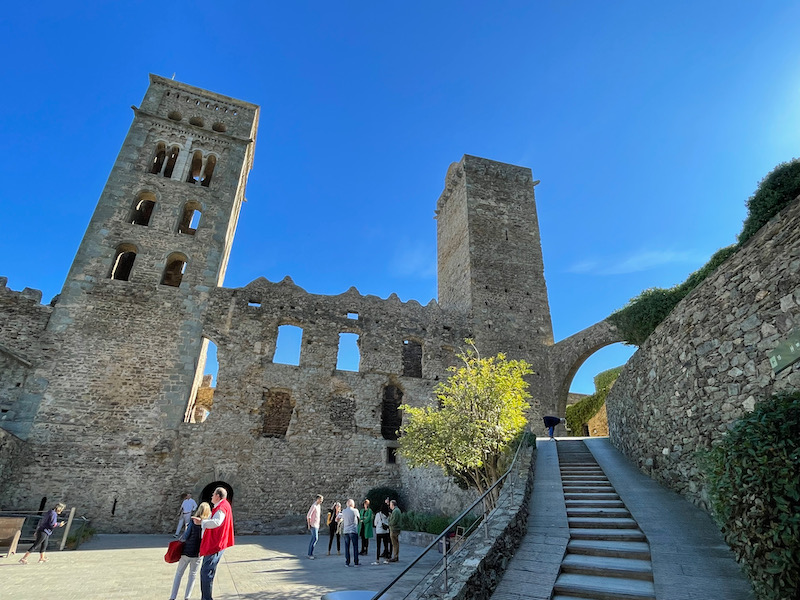
The cloister is in better shape than the rest of the complex (perhaps it was less looted, or perhaps it has been better reconstructed). I tried to get a view of the cloister and then the ruined walls above it, which would have been the residences, and then the fortified tower above.
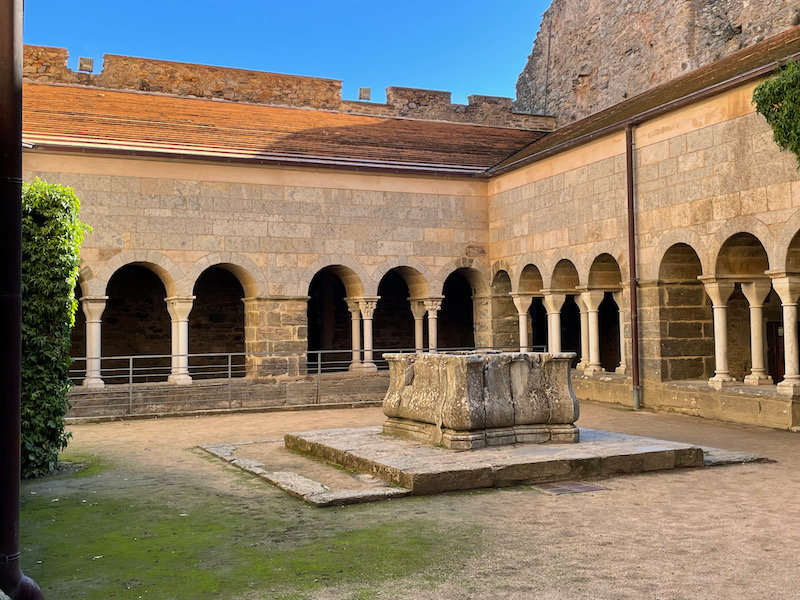

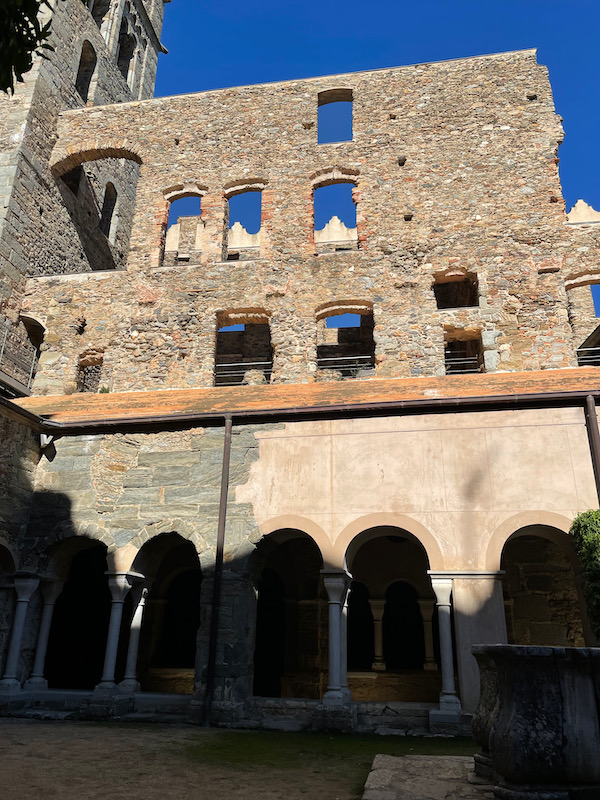
The inside of the Renaissance tower with all of the various window openings.

The church is the most important part of the monastery, although for me, this one was less than impressive. The church was built in the early 11th century and the nave is very open and lofty, due to an unusual system of pillars and coupled columns.

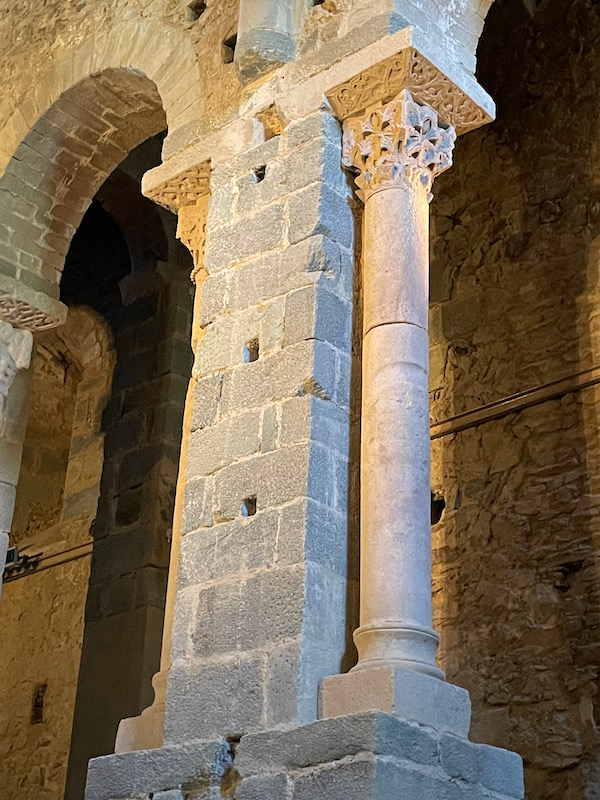
There is very little decoration left in the church, but there were a couple things still shown ... these two bas-reliefs from the 12th century showing the Apparition of Christ Resurrected, and the Lamb of God.
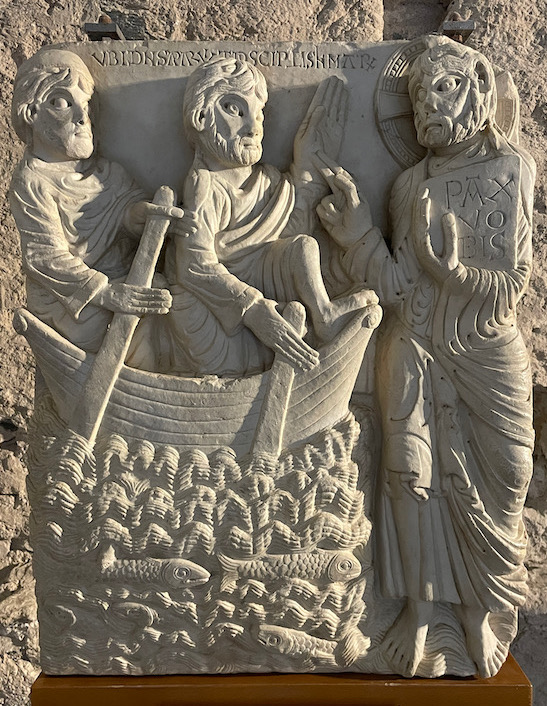
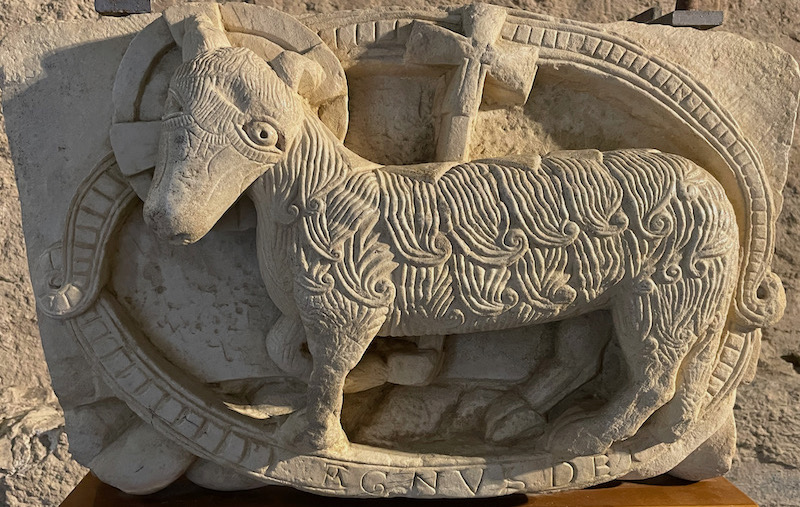
We then headed to Cadaquès for lunch. Not many pictures, since we already did a few days and a separate blog for Cadaquès and have lots of pictures of the Church of Santa María. We popped back in and I grabbed a few more pictures of the main Baroque altarpiece, including the "other" brawny fisherman that support the altar.


